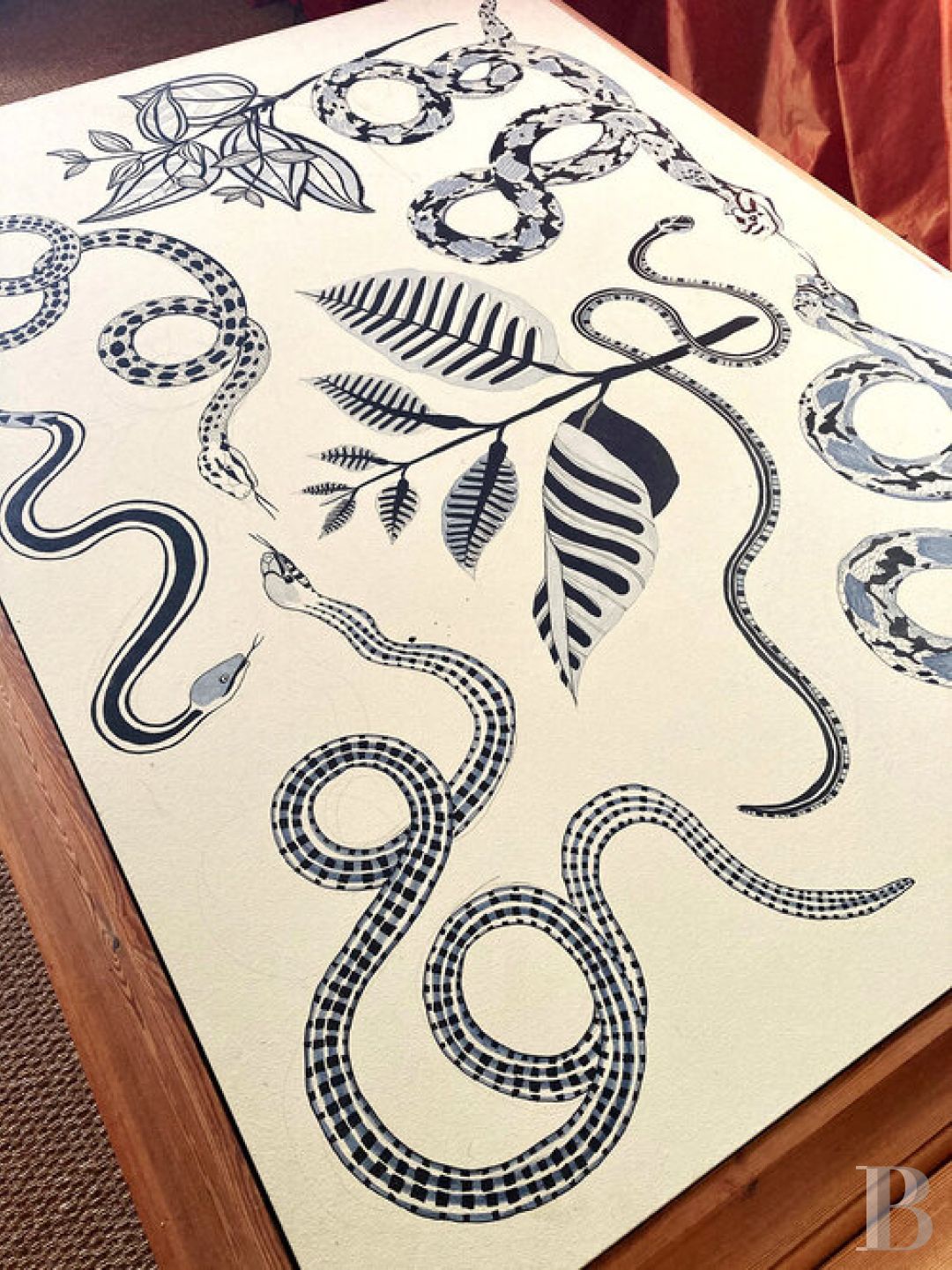Add to favorites
Log in to your personal space

In the heart of the wooded countryside, where pastures and crops form a mosaic of small plots partitioned by hedges, Hémevez remains hidden until the end of an avenue of oak trees. The centuries intermingle through a variety of buildings and architectures, and the ensemble's somewhat sober appearance is softened by an abundance of gardens filled with boxwood topiaries, climbing roses, wisteria, agapanthus, hydrangeas, and fruit trees. With the senses awakened, it is impossible to resist the urge to take a deep breath and fill your lungs with the salty, country air! The guest rooms and the gite both strike the perfect balance between historical features and modern comforts. Those who choose Hémevez will want for nothing. Only the temptation to explore the peninsula and its extraordinary natural and cultural heritage might lead them to stray from the chateau.
My father fell under the spell of Hémevez when passing by on his bicycle in 1981. Intrigued by a narrow path branching off towards the undergrowth, he followed an avenue of hundred-year-old oak trees which led to the "sleeping beauty chateau". As a Parisian antique dealer with a passion for old stones, he tried to find out if the property was for sale. It was in ruins at the time. He met with the owners, the Ango de la Motte de Flers family, who had fled the war in the early 1940s. Like the sweet but crazy man he is, he acquired the château in the winter of 1982. It was snowing inside but, despite everything, he set up his cabinet-making workshops in the outbuildings. Twenty years later, I took the same path to visit my father and discovered the house. To fully understand the property, one must be on the lookout for any clues that the stones are willing to give us. You have to get a feel for the life the building has lived since its construction, follow the evolution of its architecture, the adjoining lands and the rich culture of the Cotentin. Having fallen in love with this region steeped in history, I decided in 2019 to take Hémevez's destiny into my own hands and set up my studio as artistic director here. Day after day, succession is assured and passion is passed on. The work I undertake here allows me to live at a natural pace that is far more gentle than the frantic rhythm the rest of the world is subjected to. I embrace the responsibility that comes with a historic monument and am able to reconnect with my roots.

The oldest stones are found in the outbuildings and date back to the 12th century. The property was originally an agricultural Templar farm and was the subsidiary of another in Valcanville. One tower of the original buildings still stands, the top of which was razed during the German occupation in order for it to serve as an air defence post. Extensions added in the 15th and 16th centuries include a charming porch and a Renaissance charreterie at the entrance to the manor. The 17th and 18th centuries saw the estate expand with the construction of what we now call the chateau. The ensemble was then remodelled in 1850, leaving a Haussmanian imprint on the property. The estate is therefore the product of several chapters of history that have left their mark here. Included in these chapters are the Second World War and the German occupation which saw the addition of five blockhouses responsible for defending the German command staff. They still stand at the main entrance to the property under the hydrangeas and rhododendrons.

In the 12th century, the parish of Hémevez was largely under the rule of the Templars and the agricultural buildings date back to this time. The estate passed to the Order of the Hospitallers, before passing into the hands of lay nobles. From the 14th century until the beginning of the 16th century, it was owned by the Sainte-Mère-Église family, it then passed to the Hamon family in the 16th century, the Cadot family at the beginning of the 17th century, the Gaurault du Mont family, and finally the Motte-Angot family in the 18th century. It was subsequently deserted in the 1940s. Several years of German occupation followed, during which the chateau served as a command house. It was abandoned upon liberation, vandalised and meticulously stripped of all its furniture and objects. My father once discovered a number of badly damaged pages scattered across the floor. Among them were vellum documents dating from the 12th, 13th, and 14th centuries. Some were stamped with prestigious seals and others featured illuminations. They belonged to the Chartrier of Hémevez (183 inhabitants) and comprised eight hundred years of reports of lawsuits, rents, property rights, receipts, correspondence, and division of inheritance. There is even a deed declaring Guillaume Cadot as Sieur of Saint- Michel which has been signed by Louis XIII!
My father and I are jacks-of-all-trades. With the help of friends who work as upholsterers, ironworkers and carpenters, we worked tirelessly on the property's restoration in order to faithfully preserve this bubble of romanticism. Aside from those we made with our own hands, the furniture and objects were sourced during long visits to auction rooms, flea markets and car-boot sales to ensure they harmoniously punctuated the volumes. As for the lovely gardens, they have allowed nature to slowly retake centre stage at the property. We have discreetly added a scattering of French-style flowerbeds where roses, boxwood, agapanthus, palm trees and hydrangeas grow by the dozen. The property provides an escape where we can reconcile with the world and share our outlook on life, which is carried by the beauty of our heritage, with guests. We are happy to finally be able to open our doors to visitors!
The Cotentin is a peninsula and therefore offers a vast coastline whose appearance is everchanging according to the exposure. Everything on the coast is magnificent, the suspended landscapes are spectacular and wild. On the East Coast: Omaha Beach, Utah Beach and the landing museum; Colville cemetery; Saint-Vaast la Hougue with its Vauban towers, port and market. The island of Tatihou which is home to oyster farms; the Pointe du Saire; Le Goéland, a restaurant on the waterfront in Réville; and Barfleur, the most beautiful village in France. On the West Coast: Carteret, its market, port, and restaurants - La Marine (Michelin-starred) or La Potinière on the waterfront in particular. The charming village of Portbail where Lindberg beach stretches for kilometres to the delight of sand yachters. On the North Coast: La Hague and the Nez de Jobourg, facing England; the sumptuous bay of Ecalgrain (our little Ireland) and the Custom Officer walk overlooking the beach. L'Auberge des Grottes, a restaurant at the edge of a cliff. Goury, a floating village with a lighthouse and charming walks that look as though they lead to the edge of the world.

The setting of the Château d'Hémevez lends itself perfectly to professional events such as simple or residential seminars, meetings and work evenings. The large living room and the 70m² library equipped with a large screen are available for such events. Catering can be provided on site in the main dining room with the services of a home chef or a caterer. Accommodation can be provided in the form of two guest rooms and a 200m² gîte which can accommodate a total of ten people. Additional accommodation is also available near the chateau. The chateau's location means there are many attractions nearby including the landing beaches, cultural visits, golf courses, horse riding, and walks. Tours of the chateau are also available by appointment.
ref 580556
In 1990, after twenty years of working as the head of his Marais workshop in Paris, Claude Brosselin moved to the Cotentin and founded “La Boutique du Château”. Dedicated to the manufacture of Regency-inspired wooden furniture, the quintessence of French creation found refuge here in the heart of Normandy. From then on, embassies, palaces and presidential apartments were adorned with the most beautiful “Made in Hémevez” pieces. I have drawn endless inspiration from this landscape which gives the chateau its unique style. Today, it is a joy to be a part of this collective endeavour focusing on creation and restoration with the help of my father and our friend Yahia, a cabinetmaker. It is with love that we make, sculpt and draw, freely inspired by the poetry of this place.










 A link to enter a new password has been sent to you by email.
A link to enter a new password has been sent to you by email.
By continuing your navigation, you accept the use of cookies to offer you services and offers adapted to your centers of interest and to measure the frequentation of our services. Learn more